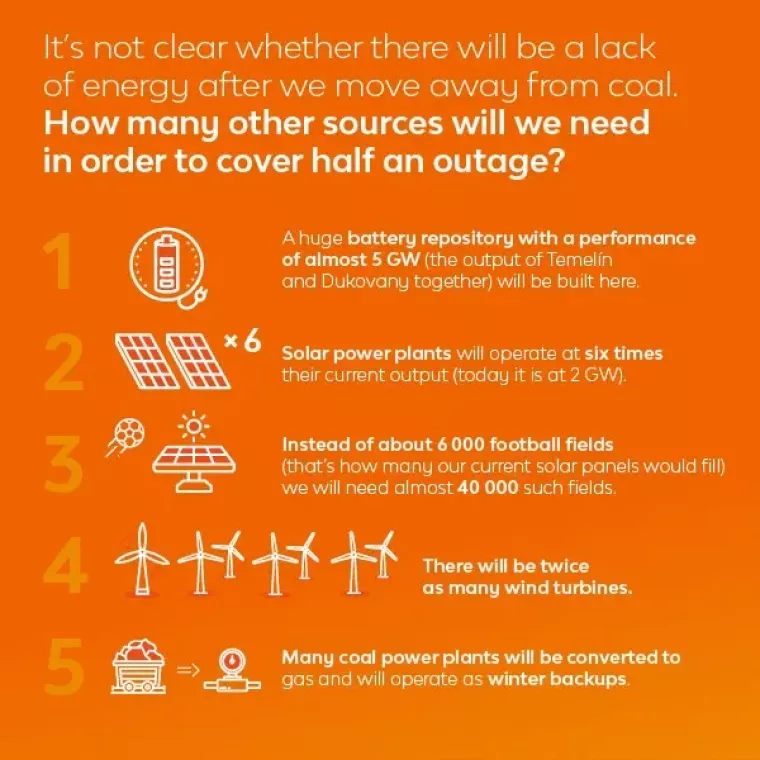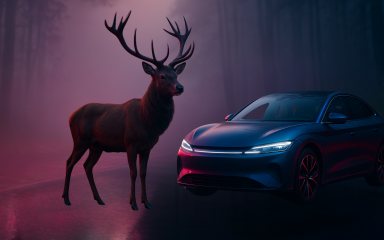
The efforts of the European Union, USA and China to bring on a green revolution in the world economy are certainly laudable, however the arguments of critics who are warning about, perhaps, a too rapid transition away from traditional electricity generation, are also worth noting. Indeed, the traditional, industrial, automotive and coal-powered Czech Republic has certainly some specifics that should not be overlooked in the mindless pursuit of sustainability.
In our last post we listed some of the advantages of the plan, according to which the Czech energy and heating sector will give up coal as early as 2033. In terms of emissions produced, we will fall from the current top position within EU to somewhere in the middle; there will be cleaner air in coal mining areas (without ash), and the inevitable onset of modern technologies will come faster in many more fields.
Clean energy is crucial for electric cars
Last but not least, the "cleanliness" of electric vehicles will also increase. Due to the prevalence of coal-based power generation in this country, the electric cars emit only 25% less emissions into the atmosphere than internal combustion engines. The European Union average, according to an extensive study by the agency Ricardo, is about 55%.
A step forward or a jump off a cliff?
But some electricity experts are afraid of what will replace the loss of half of the installed capacity of the power grid. Optimistic scenarios, as presented by Greenpeace, for example, seem to suggest that we will follow the trends of neighboring countries (like Austria and Germany).
Giant battery storage facilities with the same capacity as the power plants Temelín and Dukovany combined will have to be built. The solar power plants will run at six times their current capacity and will cover an area of 40.000 football fields. The wind farms will be 20 times larger. A number of coal power plants will be converted to gas and will operate as backup for winter.
Even 25% less emissions is a good way to go. Select your electric car or hybrid for operational leasing right here.
The mystery of the Russian gas
The photovoltaic panels are aging and have to be replaced, which costs money. Wind turbines take up space - they have to be built in groups of at least ten to make sense. And ideally far from human habitation. They make a low-frequency sound that annoys animals and people. Windmills turn some of the energy into heat, which in turn changes the weather. It agitates the ground air layer so that incoming clouds essentially rain out.
The ambitious scenario envisages the construction of about 200 additional towers.
If we do not build new units of nuclear power plants, we will need to install five or six extra-large gas turbines. This means importing gas from Russia in large amounts via the Nord Stream pipeline. That will make us even more dependent on Russia. Moreover, is gas really greener? Gas has three times lower carbon footprint than coal, however, nobody knows how the Russians actually extract it. If they have large leaks, the total (global) carbon footprint may be even higher than if we stick with coal.
The German way
Nuclear power plants are extremely expensive to build and the state guaranteed buy-out prices are high. Hundreds of billions more have to be allocated to support renewable sources. The Germans buy electricity at the stock exchange (in Leipzig) at the same price as we do, but German households pay about 50% more for it. The reason for this is the higher share of renewable sources, i.e. their financial support.
The price of Czech electricity in ten years could be the same as in Germany today but perhaps also much higher. That is the price the society will have to pay for reducing emissions.
These are some of the reasons why many experts are in favor of a coal phase-out as late as possible. Apart from the proposed year 2033, the year 2038 is still at play. According to various estimates, such scenario would be half a trillion crowns cheaper. This is also the year that Germany has pledged to phase out coal. Trying to quickly shut down coal power plants by the year 2033 may end up being the more expensive and less efficient option.
The future will be greener – and more expensive.



